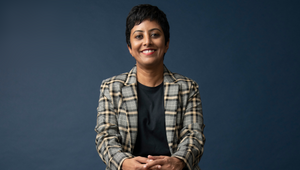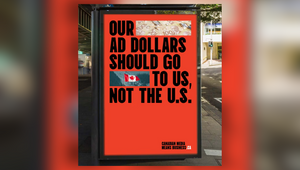
The Call for Sustainability in the Industry across the Asia Pacific Region

Sustainability has been a hot topic of discussion in the past years and especially since the beginning of the Covid-19 pandemic, during which due to disruptions all over the world, multiple industries were faced with the inevitability of having to slow down. Particularly this slowing was the reason for the numerous successes the world saw when it comes to environmentalism, be it when it comes to emissions from planes and general travel or sustainability in office spaces (when a large portion of the work force moved online). Of course, the advertising world followed suit. Sustainable production has been on the forefront of creative industries and many production companies and agencies gave themselves a pat on the back for thinking about it and setting goals towards it.
These goals were, of course, disrupted massively by the world crisis, so much of the production process in the ad world had to either cease entirely or find a way to do it in a sustainable manner. Although the West has been trying to lead the way when it comes to environmentally friendly productions (how true that is, is another story), the Asia Pacific region also requires a closer look at its practices and changes in regulatory standards, as well as how much of them are being upheld. New Zealand, Australia, India, Singapore and China are all at the forefronts of production and creativity for the past decade, however, it is worth finding out more about their sustainable practices.
Jazz Tonna, creative director at Happiness Saigon maintains that “when Happiness looks at sustainable production, there are typically two ways we identify one. First thing is, to do things as ‘efficiently’ and humanly as possible.” That, for Jazz, doesn’t mean doing more in less, but doing better as a holistic approach. “Is it really sustainable to do a 20-hour shoot or would it be more efficient to do it in two days?” A great question to pose. “The second is how environmentally friendly a production is. From big decisions like whether we really need to fly for this shoot to smaller things like banning single-use plastic on set.” It seems that efficiency and sustainability, like in many instances, go hand in hand in production as well. When it comes to Vietnam specifically, Jazz claims that “it’s on it’s way but has not fully arrived yet.”
“Covid forced us to be efficient indeed, but perhaps with a different motivation than most,” Jazz says. “It’s more about survival than making the conscious choice. However, Vietnam is making big commitments and it’s becoming easier to choose sustainable as other options are more accessible than before. Covid showed us what is possible when you need to be inventive – we try to view these new ways of working as an opportunity that will help us embrace a more sustainable production. Remote shoots and limited crews allow for more focus and flexibility, and in the end, a better creative product. And that’s what it’s all about.”
What is it all about when it comes to another production giant in the region, Singapore? Sarah Emmanuel-Cheong, general manager of UltraSuperNew Singapore explains that in the country there aren’t any specific regulations when it comes to sustainability in production. “A lot of larger brands such as Unilever have a set of guidelines to adhere to. As a registered vendor we receive queries pertaining to our sustainable practices, and if that meets their requirements, we stay on the list of vendors. So, as far as clients go, this has become quite normal practice, but in terms of an official regulating body, there is none,” Sarah says.
And this is not the case only in Singapore, but all across the region. According to the Kantar Sustainability Report, 76% of audiences pay a lot of attention to the environment and environmental issues. It is a fact that audiences and brands alike have become more aware of the need for sustainability, which might warrant such practices becoming the norm, however also poses the danger of ‘greenwashing’.
“Particularly in Asia, greenwashing is quite painful,” says Sarah. “Consumers are holding agencies and brands accountable more and more and often calling out brands, particularly in fashion, who publicly count themselves as sustainable with smaller, niche production chains and values. Then you see their products on Chinese mass retail websites such as Ez Buy or Taobao, which just shows them to be insincere in their brand comms.” Having that said, with more communication and open conversations on social media, consumers are much more able and willing to identify greenwashing, and consequently denounce brands that go down “that slippery path”.
For UltraSuperNew in Singapore, it is vital to identify those brands and always require data and proof to back any claims up. “That is a mandatory factor for us,” says Sarah. She also believes that sustainable practices enforced by brands and companies should be a vital part of their communications, so that nobody falls into the trap of misinterpretation. However, when we look at it the other way around, Sarah says that “very few agencies themselves approach clients and provide them with an angle of sustainability that isn’t there to begin with. Do I feel like the onus should be on agency and client collaboration to achieve that? Definitely.” She also points to some changes the pandemic induced – big budget cuts, movements of people, changes in production, that have pushed agencies in the right direction.
As Sarah suggests, it seems to be that brands might be doing more of the heavy lifting when it comes to sustainable practices. Unilever itself became a founding consortium member of AdGreen in 2020. “What this means for all our brands in countries where AdGreen is live, is that they must ensure that sustainable productions, with a zero-carbon-zero-waste target, become standard practice in Unilever,” explains Gerri Hamill, head of production at WPP@Unilever. To ensure this is the case, Unilever has committed to using the AdGreen carbon emissions calculator to see where practical changes can be made in order to reduce a project’s carbon footprint on all applicable productions. “We are very mindful of sustainability with the production partners we work with in the region,” Gerri says “we make it clear in the briefing process about the strong focus on diversity, inclusion and sustainability in the production. We follow through from preparation, to shoot, to post-production delivery.”
For Dana Cadden, global head of advertising production at the consumer goods giant, there are simple assessment steps to be taken focusing on four key emission areas: “transportation, spaces (studios/locations), materials, and disposal based on the standard nature of production.”
When it comes to New Zealand, the Advertising Standards Authority is the go-to body that checks for compliance to sustainability regulations in production. Jenni Doubleday, head of creative services, Amanda Langkilde, head of content and Jane Wardlaw, head of client services at FCB New Zealand, all believe that initially sustainable production changes were “quite costly” and time consuming, but as the norm has diffused a little bit, it has become easier. “Sustainability has equally become increasingly important to clients, particularly in the last few years, in line with the increased sustainability expectations from their customers. Most have dedicated sustainability offers and are looking to implement them first internally. Outwardly and in regard to driving business on sustainability, it’s obvious that some clients are moving faster than others.”
They maintain that FCB is always expected to have sustainability and credibility and what was considered just a box ticking exercise a few years ago has now progressed to be a lot more. “Looking outwards as well as inwards and urging our clients to lean in as we believe it is part of our role to build a better New Zealand – to fight for progressive change.”
Progressive change all over the region is a fact and is being called for by clients and customers, not only in production, but also in branding. However, there is an equally growing demand for more and constant output, especially as the pandemic is shifting to its, supposedly, final stages. Brands are reactivating and there are more openings for new products.
Josy Paul, chairman and CCO at BBDO India claims that even then, people are looking for meaning and want to be “part of something bigger”, by supporting the right products. “What consumers buy becomes part of who they are,” he says. “They don’t just pick the product, they buy the brand’s story. Because it connects with who they believe they are. It is their proof, their identity and it helps them reinforce their perception about themselves. When companies provide a sustainability narrative about their product or service, the consumer feels immensely valued.”
“When it comes to re-evaluation of how brands and businesses redefine their purpose and bottom line, it’s the same thing. We are seeing this with large multinational companies as they adopt sustainability models to stay more relevant. Capitalism in its current form is breaking, and companies are collaborating with parents – be it NGOs, social entrepreneurs, government organisations, universities, sociologists, environmentalists, activists – to re-create a new version of capitalism that’s sensitive and conscious about the planet and her people. The opportunity is greater than the challenge,” concludes Josy. It seems that for advertising to expand and grow, while still reconciling with the pressing need to reduce both consumption and production, while staying afloat is to tell a story about new concepts of consumption.
Agreeing with Josy, Shaziya Khan, national planning director at Wunderman Thompson India claims that we should pay more attention to the circular economy, buying second hand, buying green and spearheading the movement “towards conscious consumption from being a niche to becoming a mainstream.” In India itself there are several regulations and compliant aspects. For Shaziya the good news is that “the ‘double bottom line’ is now a reality for 46% of participants in WARC’s global survey of marketers, as they already afford environmental and financial growth equal importance”. The double bottom line meaning that profit and purpose are both priorities. Not only this, but according to her, most companies are also “declaring tangible and long term commitments to sustainability in their communication, websites etc.”
Shaziya also points us to the WARC forecasts for 2022, that show a three-way tie when it comes to how brands and agencies are responding to environmental concerns, as approximately they are: “changing manufacturing (packaging and distribution), making public commitments they will be accountable for and encouraging green consumer behaviours in their messaging”. However, how these will be achieved is quite a different discussion.
It seems that the pandemic and the general moods in consumers and brands have pushed the talk for sustainability even further up on the agenda. Looking at the APAC region and some of its biggest competitors, it seems that regulatory bodies when it comes to sustainable practices in the industry are yet to be fully established and the balance between who pulls their weight between agencies and brands is on its way to be struck. With joint efforts, and a push from consumers with their newly acquired mindfulness on the subject, however, the region looks to be on the move when it comes to production, branding and consumption.















